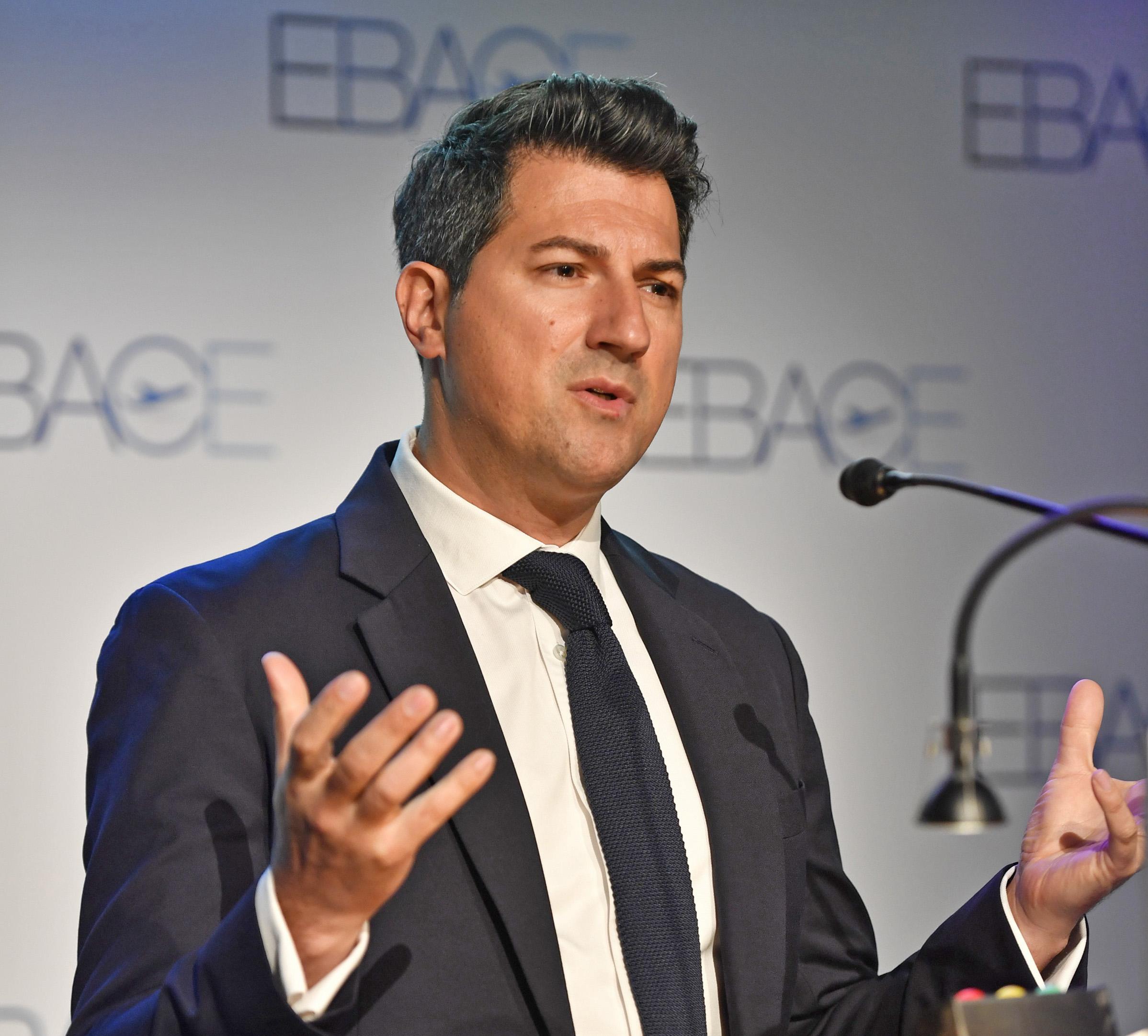
Frederic Lemos, head of Airbus Corporate Helicopters, addresses the press at EBACE 2023.
GENEVA—The entire business aviation sector has been talking about the promise and importance of sustainable aviation fuels (SAF) for years, but take-up of the non-fossil substitutes remains limited.
Supply issues are one factor, but so too is the business model operators use, one aircraft OEM has suggested.
During a pre-EBACE press conference on May 22, Frederic Lemos, head of Airbus Corporate Helicopters, highlighted operator Helsinki Citycopter, which presently flies two ACH-130 aircraft using a 38%-SAF blend supplied by Neste.
All Airbus helicopters are certified to fly on SAF blends of up to 50%, but the Finnish company is the first ACH operator to make this choice as standard.
"There are two or three points that I see as determinant for Helsinki Citycopter being able to use that fuel," Lemos said. "First, they have an agreement with an oil company that has SAF available. Second, they've built a business model based on aiming at operating with SAF." This means prices are set higher than they may otherwise have been, "because SAF is more expensive."
Ultimately, the airframer can only provide the aircraft as SAF-capable and ready: the decision to use SAF can only come after a reliable supply has been secured and, crucially, when an operator has built its economics around a more expensive fuel.
"There has to be a commitment from the company, [the SAF] has to be available and the business all has to work," Lemos said.
Meanwhile, Lemos said Airbus is confident that certification of the H-160 by the FAA will be completed by the end of 2023. The pace of the effort had been affected by COVID lockdowns, but an airworthiness directive over an avionics issue—which also affects other Airbus models—has required further work. Successful certification of the type by other regulators, and a growing number of aircraft in service, have helped build confidence.
"[The] airworthiness directive on MFD [multi-function displays] is quite simple to correct for aircraft in [service], as we have a preventive measure there," Lemos said. "But for aircraft in certification, the [FAA] requires us to correct the issue before certifying. That's an element we've been discussing with the FAA to see where we could proceed in different steps. We are in that process and we are very hopeful to come to a conclusion soon."
